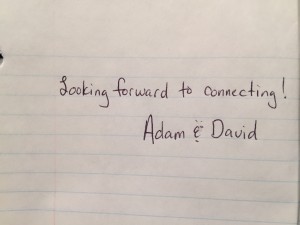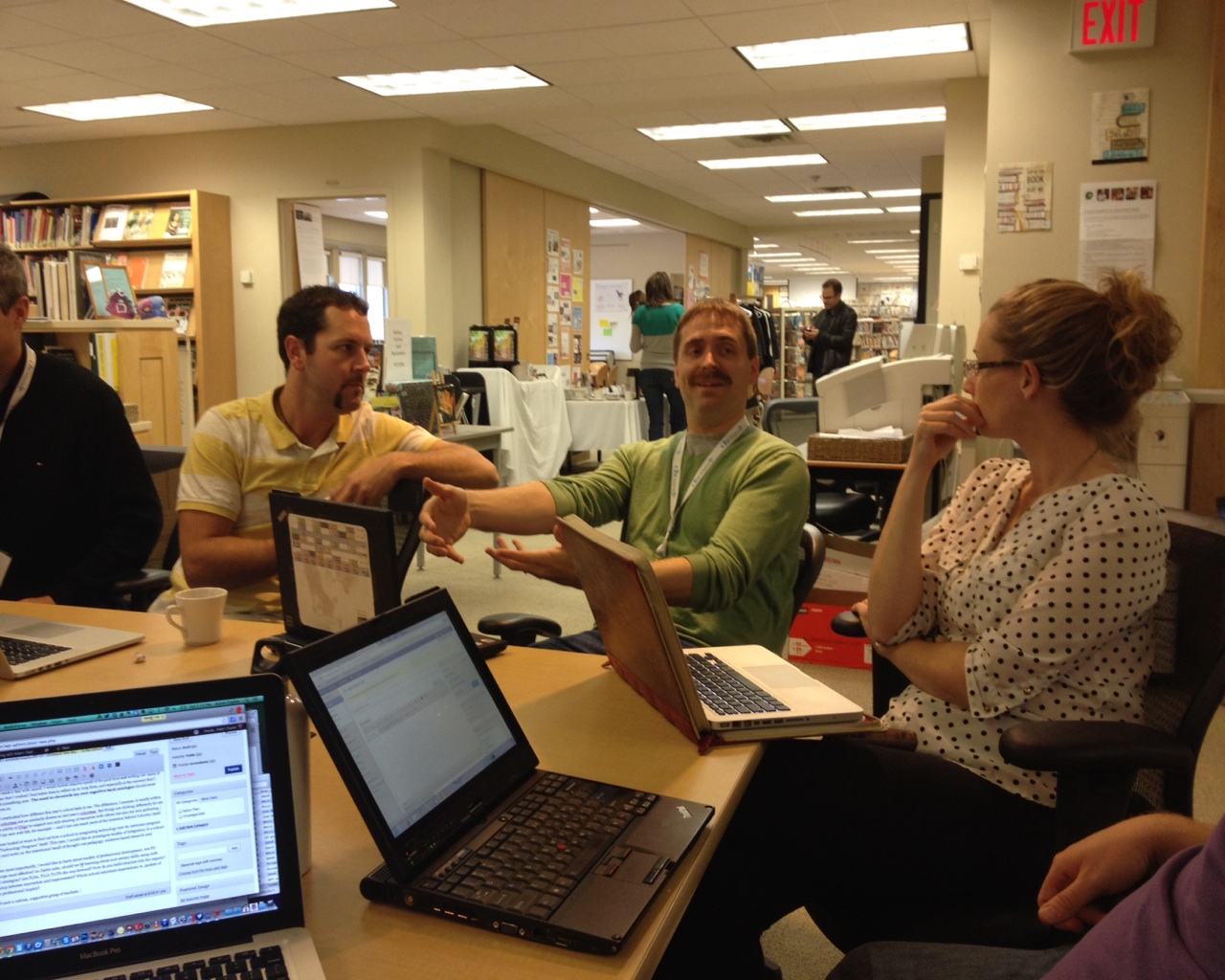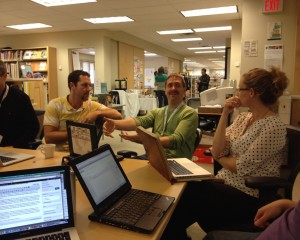Using Design Thinking to Refine an Action Plan
Today was the second Face-to-Face meeting of Cohort 21 and spent the time together following a Design Thinking protocol based on Design Thinking For Educators toolkit from IDEO.
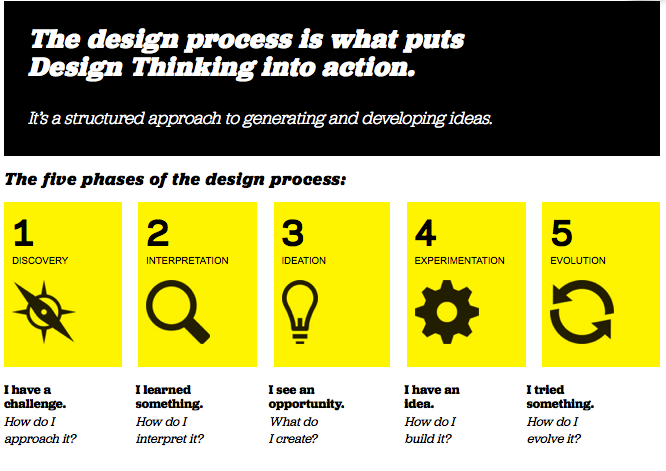
We received a 7-page booklet as a graphic organizer to help us to:
- add procedural structure to our process
- capture our thinking and ideas tangibly in a visual way; and
- scaffold the development of a focus question by exploring user needs, empathizing with various perspectives, answering challenge questions and clarifying the problem.
At my school, we want to inform the future development of what we are referring to as a technology position. Whether this becomes a scope and sequence or a strategic pillar or a technology curriculum is still not fully articulated, but we are beginning with the idea that we want to know what’s going on right now. In a variety of areas. For a variety of grades. Or divisions. Or academic disciplines – we aren’t really sure. So we started with the most broad possible question, “What’s Going On?”

First, we reflected on some challenges we were having and looked at the perspectives of a few individuals involved in or affected by this challenge. Considering two different students (one in Gr 3 and one in Gr 6), I tried to describe my motivation to look at this problem in terms of value to them. How would their lives be different if this challenge didn’t exist? I identified a few barriers (people problems, systemic problems) and worked towards a solutions-focussed articulation of a design question, phrased in the human-centred language of possibility, “How Might We…”

My favourite part of the process was the deep digging of initial responses to my working question. “Crazy Eights” is the idea that you use a mixture of speed and perseverence to generate 8 different ideas that might become solutions. You remove constraints such as time, money, personel, knowing how to do it, and other features usually associated with reasonability and just generate ideas, or ideate, in the lexicon of Design. It is a wonderful experience to notice the moment when you are reaching beyond the low-hanging fruit, using the best worst idea to challenge your own thinking (“Hey, this aspect isn’t such a bad idea after all.”) and move rapidly enough to want to go back to add additional detail afterwards.
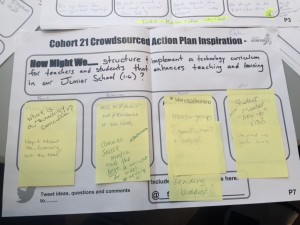
Having settled on a working question, “How Might We structure & implement a technology curriculum for teachers and students that enhances teaching and learning in our Junior School?”, we posted the questions to request feedback. This process of walking the halls, browsing the falls, digesting the working questions, providing feedback on any and all aspects of the question / possible solutions / challenge questions was really satisfying, but it took a long time!
I received a collection of ideas from some pretty smart and experienced cohort members. Thanks to @clovrics for helping me articulate my design question (good luck to her on her quest to organize independent Math learning) and to @crussell for providing a really great sample of something similar she has worked on.

 My year of learning so far as been influenced by a few characters, each representative of an idea that impacts teaching and my work with our teachers. I’ll refer to each idea individually, but know that they all connect to the importance of Community for cohesion, connectedness and learning.
My year of learning so far as been influenced by a few characters, each representative of an idea that impacts teaching and my work with our teachers. I’ll refer to each idea individually, but know that they all connect to the importance of Community for cohesion, connectedness and learning.
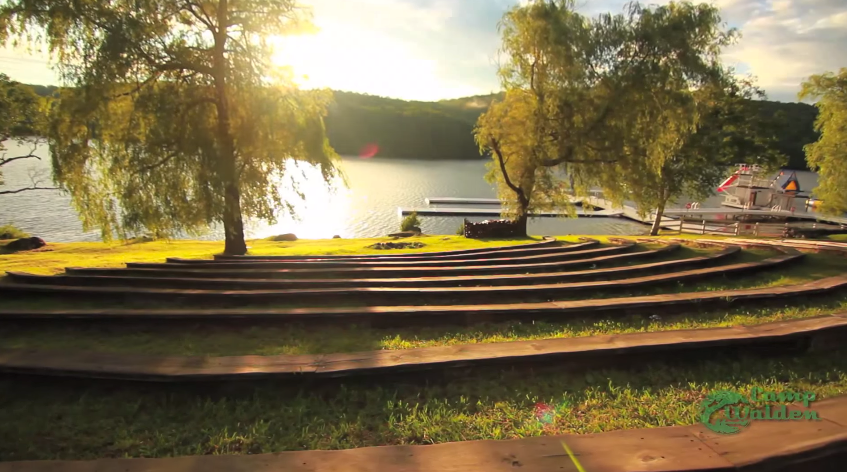


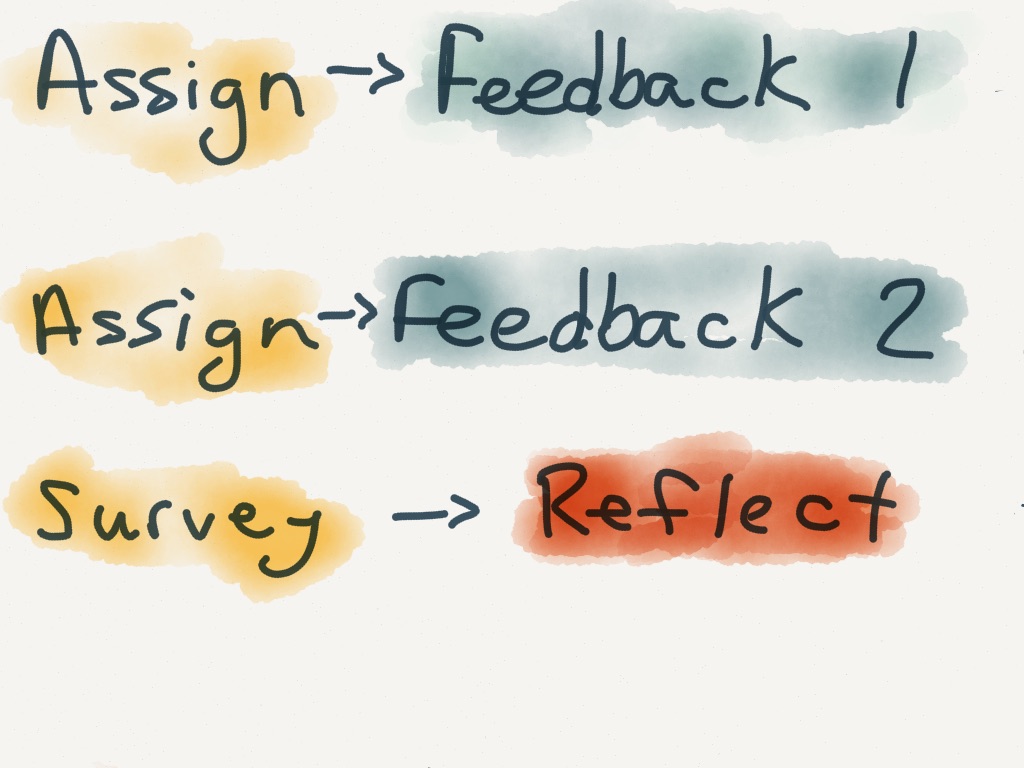
 In addition, students receive specific descriptive feedback in one of two digital formats; verbal or typewritten. The typewritten feedback is attached using the commenting/review feature of a word processor. The verbal feedback is recorded online using a digital tool called
In addition, students receive specific descriptive feedback in one of two digital formats; verbal or typewritten. The typewritten feedback is attached using the commenting/review feature of a word processor. The verbal feedback is recorded online using a digital tool called 